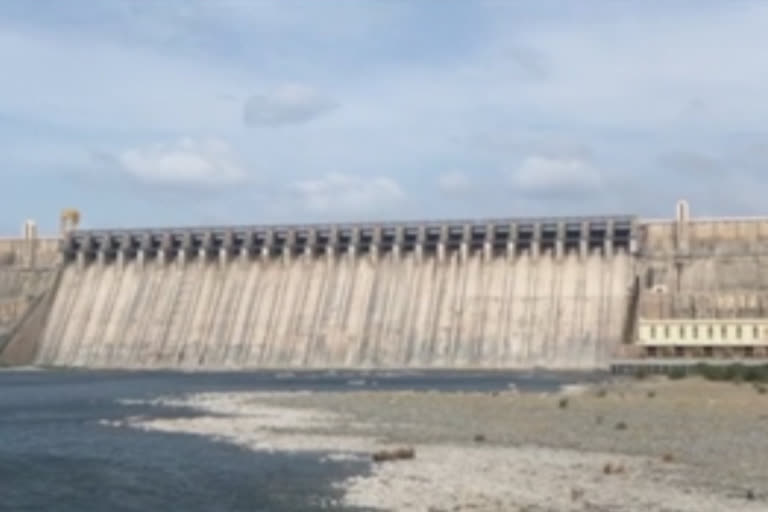Amaravati (Andhra Pradesh): A week after they were opened to let out the gushing flood into the sea, the crest gates of the Nagarjuna Sagar reservoir in Andhra Pradesh were closed on Monday as the inflow of surplus water fell significantly.
The flood threat in Guntur and Krishna districts, consequent to the deluge, has abated, but it could take a couple of days for normalcy to restore, official sources said.
Over 17,000 persons have been accommodated in 64 relief camps in Krishna and Guntur districts as hundreds of houses remained marooned.
The flood discharge at Nagarjuna Sagar that was 2.85 lakh cusecs on August 13, fell to a low of 55,122 cusecs at 7 PM on Monday, with an equal amount of water flowing in.
As such, the Nagarjuna Sagar Project authorities shut the crest gates, maintaining storage of 304.99 tmc ft as against the full capacity of 312 tmc ft.
At Srisailam, only 1,64,451 cusecs were being let out while the inflow too reduced to 3,87,998 cusecs.
The Water Resources Department has impounded 206.97 tmc ft of water at Srisailam against its full capacity of 215 tmc ft.
Five of the 10 crest gates at Srisailam were also closed on Monday due to sharp fall in inflows from the upstream Almatti and Jurala.
Downstream the Nagarjuna Sagar, the Dr KL Rao Sagar Pulichintala Balancing Reservoir filled up for the first time, holding 36.69 tmc ft of water against its full capacity of 45.77 tmc ft.
Pulichintala is currently receiving 2.99 lakh cusecs, according to the State Real-Time Governance Centre.
State Water Resources Minister P Anil Kumar said that a maximum flood discharge of 8.5 lakh cusecs was recorded at Prakasam Barrage this season.
"This was the largest flood in river Krishna in 10 years.
We let out over 250 tmc ft of water into the Bay of Bengal in the last one week," the minister told reporters.
Another 35 tmc ft of water was released into irrigation systems in the parched Rayalaseema region, he said.
"Our first priority is to meet the drinking water needs.
We are ensuring steps to fill up reservoirs in Rayalaseema to overcome the crisis in the region," Anil Kumar said.
As the flood receded, authorities have now started enumerating the losses to various crops in Krishna and Guntur districts.
As per preliminary estimates provided by the State Disaster Management Authority, agriculture crops in over 10,000 hectares and horticulture crops in close to 5,000 hectares were affected due to the flood.
Also Read:Andhra doctor asked for explanation over I-Day dance on 'inappropriate' song
